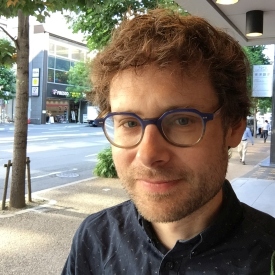Here are two papers we are presenting this month:
![]() (1) June 22nd in Madeira, Portugal at the “Playable Cities” workshop in the INTETAIN conference, we will be presenting a paper on “Placemaking across Platforms: Playing to Circulate Stories in the Smart City” by Benjamin Stokes, Karl Baumann, and François Bar.
(1) June 22nd in Madeira, Portugal at the “Playable Cities” workshop in the INTETAIN conference, we will be presenting a paper on “Placemaking across Platforms: Playing to Circulate Stories in the Smart City” by Benjamin Stokes, Karl Baumann, and François Bar.
ABSTRACT: Urban placemaking can deepen the sense of place, including with novel technologies. Placemaking seeks to revitalize public spaces, attract investment, and rally stakeholders. How can play help to position residents as storytellers and circulators of key images tied to local history? This study shows how play can leverage smart city technologies, including urban furniture and rebuilt payphones. Game mechanics were selected to gather crowds at local monuments, generate pictures of the group tied to local mythology, and automatically circulate images online. In contrast to “app” based approaches, the design facilitated cross-platform “spread” for local storytelling. The study shows how placemaking can benefit from physical objects and hybrid interfaces to facilitate the circulation of local placemaking narratives.
 (2) June 30th in Troyes, France at the biennial Communities and Technologies (C&T) conference, our paper is: “Infrastructures of the Imagination: Community Design for Speculative Urban Technologies” by Karl Baumann, Benjamin Stokes, François Bar and Ben Caldwell.
(2) June 30th in Troyes, France at the biennial Communities and Technologies (C&T) conference, our paper is: “Infrastructures of the Imagination: Community Design for Speculative Urban Technologies” by Karl Baumann, Benjamin Stokes, François Bar and Ben Caldwell.
ABSTRACT: Recent speculative and critical design practices may critique the dominant socio-cultural assumptions of technologies, but often lack diversity and participatory input outside the privileged realm of academic and professional designers. This paper investigates the process and potential of designing speculative futures with local communities, in order to collectively imagine technology that serves a common good and reinforces local identity. This study reflects on the “Sankofa City” project, a three-month community-university collaboration based in a historically black neighborhood in South Los Angeles. The project utilized design fiction scenario videos and collages to present provocative design concepts to local stakeholder meetings and the general public. This paper analyzes the methodology and outcomes of co-designing emerging technologies (such as augmented reality and self-driving cars) in order to establish “infrastructures of the imagination” for long-term strategies and alternative cultural models of innovation.
